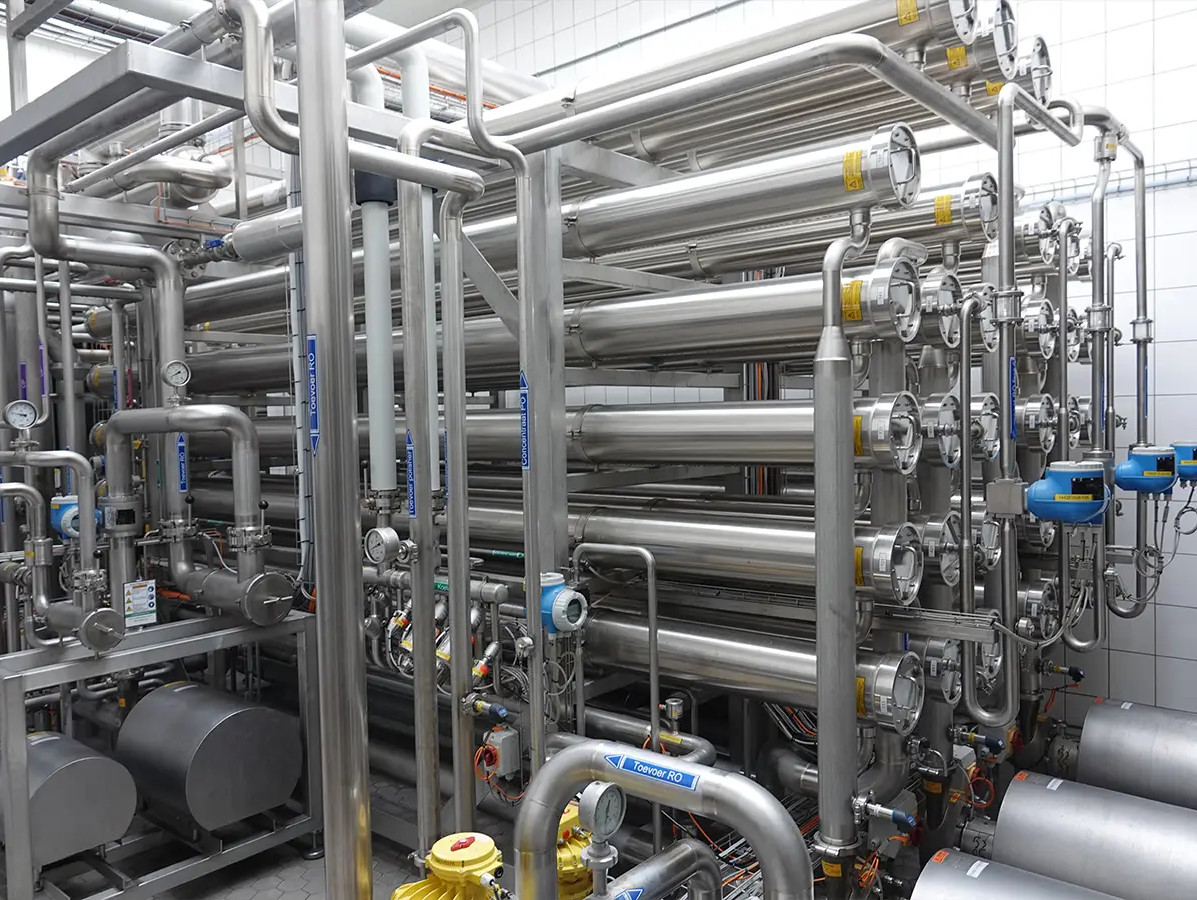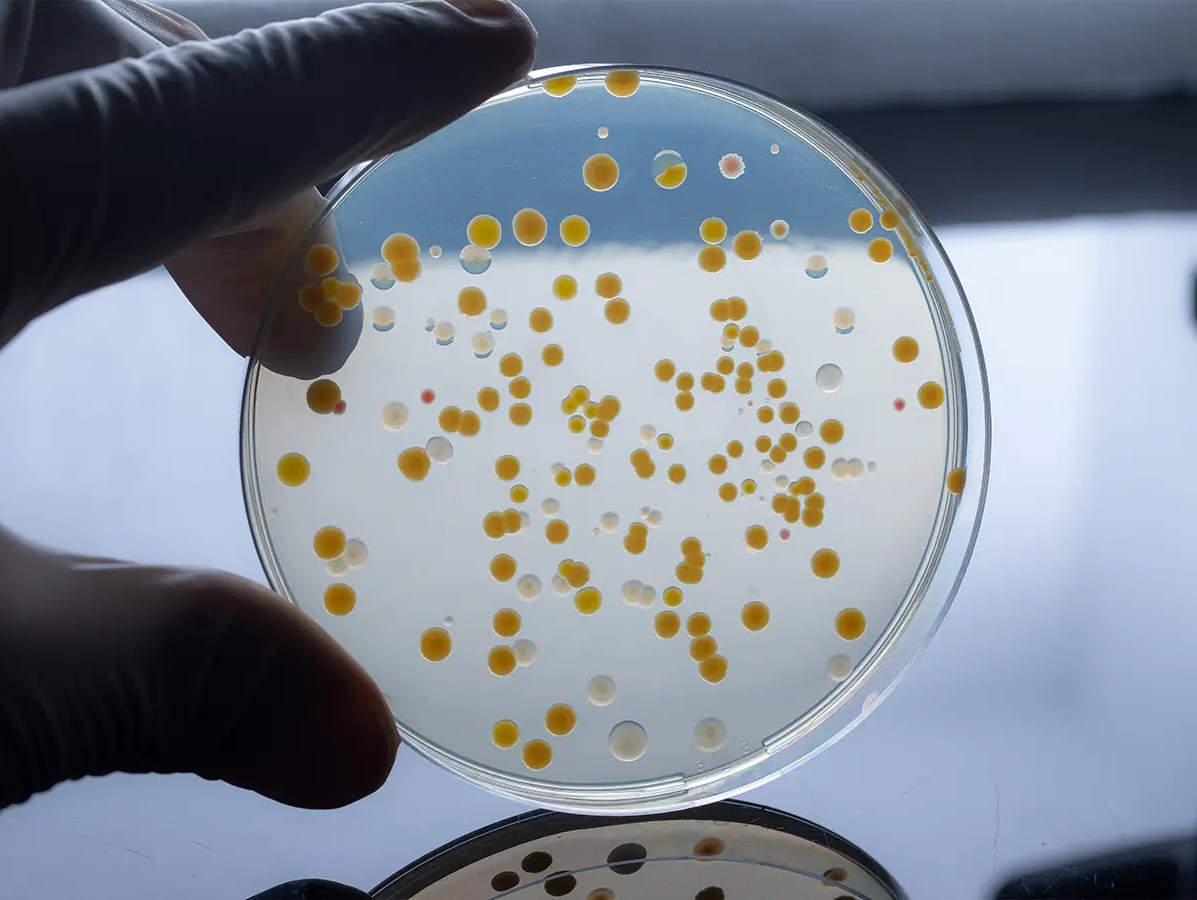
Membrane filtration plays a vital role in many industrial processes – from dairy and beer production to plant-based foods and blood plasma. Yet keeping membrane systems clean remains a challenge. Contamination is often complex, membranes are fragile, and the risks of microbiological contamination or production loss are significant.
Many companies lack sufficient insight – and therefore control – over this critical filtration process, says Gert Visscher, director of Eco2Clean. “We take a specialist approach. Through our collaboration with Realco we’re able to offer powerful enzymatic membrane cleaners in combination with targeted process optimisation.”
“Membranes are delicate, and the contamination is often a complex mix of organic material, inorganic deposits and biofilm,” Gert explains. “Using the wrong cleaning agents can damage the membrane, lead to inefficient cleaning or even stimulate microbial growth. That means reduced filtration performance, higher energy consumption, and ultimately microbiological risks and a drop in final product quality. Inappropriate cleaning methods can also shorten membrane lifespan and increase maintenance costs.”
Each installation, application and type of contamination is different – requiring a tailored approach. “What sets us apart is that we don’t start with the cleaning products themselves. Instead, we begin by thoroughly analysing the entire filtration process. Together with Realco, we assemble a dedicated project team that brings together the expertise of both organisations.”
This work is guided by the Performance Optimisation Program, or POP. The programme follows a three-step structure.
Step one is problem identification. “We begin by analysing the nature of the fouling – whether it’s organic residue like proteins, fats or starch, inorganic scaling, or microbial biofilms,” says Gert. “We also assess the mechanical condition of the membranes. Using tools such as SLYM BART (for detecting biofilm-forming bacteria), metagenomics 16S DNA analysis, and ATP testing, we generate an accurate picture of microbial load. The Fouling Identification procedure then confirms or rules out the presence of biofilm.”
Step two is developing a custom cleaning protocol. “Based on our analysis, we select an enzymatic formulation specifically tailored to the type of fouling found. These formulations are combined in varying compositions, activities and concentrations. The result is a deep-acting, multi-functional cleaner that works effectively without being aggressive to the membrane material. Each blend is uniquely matched to the type of contamination in the system, targeting it with precision. The enzymes break down fouling at a molecular level without harming the membrane. Our products are highly effective and fully sustainable – they’re safe for humans, equipment and the environment. If no existing formulation is suitable, we adjust it accordingly.”
Step three is on-site implementation of the optimised cleaning protocol. “We manage the entire process from start to finish. Our technologists closely monitor results, making adjustments where needed until optimal performance is achieved. Even after completion, we continue to monitor the system periodically.”

“Ceramic microfiltration systems are often cleaned with chlorine-based agents,” Gert explains. “Due to environmental concerns, demand for chlorine-free alternatives is growing. Our formulations are a great substitute – and they significantly improve cleaning performance. There’s also clear microbiological benefit: the right enzyme cocktail thoroughly removes biofilms and contributes to a safe end product for consumers. Efficient cleaning saves on time, energy, water and chemicals – and extends membrane life, reducing maintenance and replacement costs.”
Eco2Clean has already delivered significant savings through the POP programme in several dairy operations. Positive results have also been achieved in egg processing. “One customer had been using membrane cleaning products from a well-known supplier for years. After POP analysis and on-site testing, we were able to cut both consumption and cost by around 50%, thanks to an improved cleaning regime and Realco’s enzymatic cleaners.”
“Cost savings through better cleaning can only be realised with a thorough analysis of the membrane filtration process,” Gert emphasises. “In practice, we often see outdated cleaning methods being used simply because they’ve become the norm – without verifying whether they still match the current process requirements. A thorough assessment can uncover valuable insights and reveal opportunities for improved performance, more efficient resource use, and significant cost reduction.”
Source: vakblad Voedingsindustrie 2025